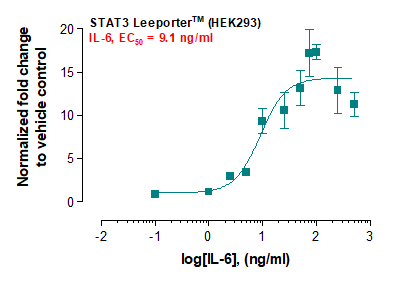Toxoplasma P32
Shipping Info:
For estimated delivery dates, please contact us at [email protected]
| Amount : | 0.5 mg |
| Purification : | Toxoplasma protein is >95% pure as determined by 10% PAGE (coomassie staining). |
| Content : | Sterile Filtered solution containing containing PBS and 25mM arginine. |
| Storage condition : | Toxoplasma P32 although stable at 4°C for 1 week, should be stored below -18°C. Please prevent freeze thaw cycles. |
| Alternative Name : | The life cycle of Toxoplasma gondii has two phases. The coccidia like takes place only in members of the Felidae family which makes these animals the parasite's primary host. The asexual part of the life cycle can take place in any warm-blooded animal, like other mammals(including felines) and birds. T. gondii constructing daughter scaffolds within the mother cell. In the intermediate hosts (including felines), the parasite invades cells, forming intracellular so-called parasitophorous vacuoles containing bradyzoites, the slowly replicating form of the parasit. Vacuoles form tissue cysts mainly within the muscles and brain. Since they are within cells, the host's immune system does not detect these cysts. Resistance to antibiotics varies, but the cysts are very difficult to eradicate entirely. Within these vacuoles T. gondii propagates by a series of binary fissions until the infected cell eventually bursts and tachyzoites are released. Tachyzoites are the motile, asexually reproducing form of the parasite. Unlike the bradyzoites, the free tachyzoites are usually efficiently cleared by the host's immune response, although some manage to infect cells and form bradyzoites, thus maintaining the infection. |
Source: Escherichia Coli.
Sterile Filtered solution.
The life cycle of Toxoplasma gondii has two phases. The coccidia like takes place only in members of the Felidae family which makes these animals the parasite's primary host. The asexual part of the life cycle can take place in any warm-blooded animal, like other mammals(including felines) and birds. T. gondii constructing daughter scaffolds within the mother cell. In the intermediate hosts (including felines), the parasite invades cells, forming intracellular so-called parasitophorous vacuoles containing bradyzoites, the slowly replicating form of the parasit. Vacuoles form tissue cysts mainly within the muscles and brain. Since they are within cells, the host's immune system does not detect these cysts. Resistance to antibiotics varies, but the cysts are very difficult to eradicate entirely. Within these vacuoles T. gondii propagates by a series of binary fissions until the infected cell eventually bursts and tachyzoites are released. Tachyzoites are the motile, asexually reproducing form of the parasite. Unlike the bradyzoites, the free tachyzoites are usually efficiently cleared by the host's immune response, although some manage to infect cells and form bradyzoites, thus maintaining the infection.
Recombinant Toxoplasma Gondii P32 (GRA6) produced in E.coli containing 180 amino acids of the Dense Granule Antigen 6 (GRA6) and fused with a 6xHis tag at C- terminus. This antigen forms dimers on SDS-PAGE under denatured conditions, compared to other toxoplasma monomer antigens, it has better immunoreactions.
Sterile Filtered solution.
The life cycle of Toxoplasma gondii has two phases. The coccidia like takes place only in members of the Felidae family which makes these animals the parasite's primary host. The asexual part of the life cycle can take place in any warm-blooded animal, like other mammals(including felines) and birds. T. gondii constructing daughter scaffolds within the mother cell. In the intermediate hosts (including felines), the parasite invades cells, forming intracellular so-called parasitophorous vacuoles containing bradyzoites, the slowly replicating form of the parasit. Vacuoles form tissue cysts mainly within the muscles and brain. Since they are within cells, the host's immune system does not detect these cysts. Resistance to antibiotics varies, but the cysts are very difficult to eradicate entirely. Within these vacuoles T. gondii propagates by a series of binary fissions until the infected cell eventually bursts and tachyzoites are released. Tachyzoites are the motile, asexually reproducing form of the parasite. Unlike the bradyzoites, the free tachyzoites are usually efficiently cleared by the host's immune response, although some manage to infect cells and form bradyzoites, thus maintaining the infection.
Recombinant Toxoplasma Gondii P32 (GRA6) produced in E.coli containing 180 amino acids of the Dense Granule Antigen 6 (GRA6) and fused with a 6xHis tag at C- terminus. This antigen forms dimers on SDS-PAGE under denatured conditions, compared to other toxoplasma monomer antigens, it has better immunoreactions.
|
There are currently no product reviews
|

















.png)










